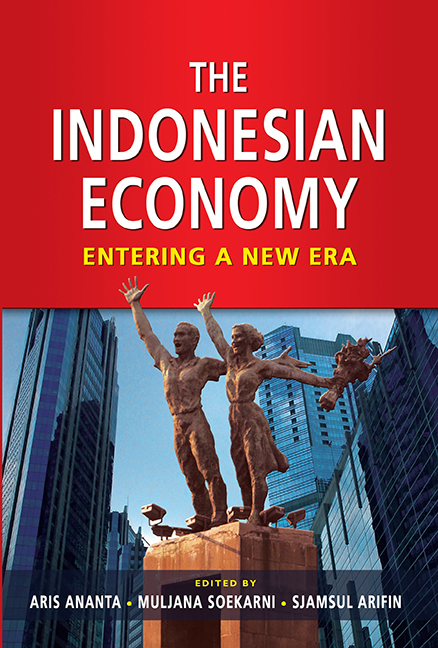Book contents
- Frontmatter
- Contents
- List of Tables
- List of Figures
- Message from the Deputy Governor of Bank Indonesia
- Message from the Director of the Institute of Southeast Asian Studies
- Foreword
- Preface
- Contributors
- PART I INTRODUCTION
- PART II MONETARY AND FISCAL POLICIES
- PART III DOMESTIC ECONOMY
- PART IV SEARCH FOR NEW PARADIGMS
- Index
Foreword
Published online by Cambridge University Press: 21 October 2015
- Frontmatter
- Contents
- List of Tables
- List of Figures
- Message from the Deputy Governor of Bank Indonesia
- Message from the Director of the Institute of Southeast Asian Studies
- Foreword
- Preface
- Contributors
- PART I INTRODUCTION
- PART II MONETARY AND FISCAL POLICIES
- PART III DOMESTIC ECONOMY
- PART IV SEARCH FOR NEW PARADIGMS
- Index
Summary
Very few observers in the international community fully appreciate the fundamental transformations that have occurred in Indonesia since the late 1990s, just as there has been a tendency to prematurely write off the country's prospects in the past. At the time of independence, there were doubts that the sprawling archipelago would hold together. Yet it has, decisively, unlike some other highly diverse nation states such as the former USSR, the former Yugoslavia, and Pakistan. By the mid-1960s, the standard development economics textbook of the time, by long-time Indonesia expert Benjamin Higgins, characterized the country as a “chronic dropout”. Gunnar Myrdal, in his classic Asian Drama, observed that, “As things look at the beginning of 1966, there seems to be little prospect of rapid economic growth in Indonesia.” History was not kind to either observation, as income per capita quadrupled in the next three decades through to the late 1990s. In the early 1990s, the World Bank classified it as one of the “miracle economies”.
There were similarly gloomy prognostications in 1998: Indonesia: From showcase to basket case was one of the more sensational titles at that time. The economy seemed to be in free fall, the formal banking system had collapsed, the demise of the Soeharto regime had left a political and institutional vacuum, ugly ethnic violence was widespread, and even the nation's territorial integrity appeared to be under threat. Thirteen years later, Indonesia has been transformed. It is now the most vibrant democracy in Southeast Asia, with two rounds of peaceful, legitimizing nationwide elections at the central and regional levels. The economy has bounced back strongly to rates of growth not far short of those of the Soeharto era. It successfully navigated the global financial crisis, with just a very small decline in growth momentum. Growth returned to above 6.0 per cent in 2010. Commencing in 2001, there has been a bold, “big-bang” decentralization, which has transferred administrative authority and financial resources to the kabupaten (districts). The painful separation of East Timor proceeded smoothly, and the two countries enjoy a harmonious, productive relationship. Indonesia has also begun to look outwards again, to the great benefit of its immediate ASEAN neighbours. It is widely regarded as a leader of the moderate Moslem world, and it has also joined the pre-eminent international forum, the G20.
- Type
- Chapter
- Information
- The Indonesian EconomyEntering a New Era, pp. xvii - xxiiPublisher: ISEAS–Yusof Ishak InstitutePrint publication year: 2011

